Contents
Planting and caring for perennial heliopsis will not require much effort from the gardener. The process of planting a plant and subsequent care for it is standard. Like other flower crops, heliopsis needs watering, loosening, and timely fertilizing. And since the bush is quite high, the establishment of supports is required.
How does heliopsis reproduce?
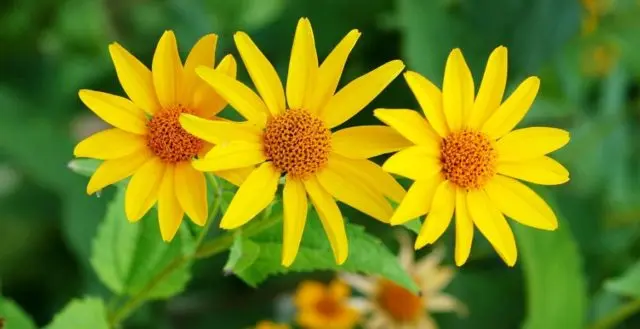
Perennial heliopsis is actively used in landscape design
Heliopsis is a perennial herb native to North and Central America. The name of the culture in translation sounds like “sun-like”, which fully justifies its appearance.
The stems of the plant are straight, often their height is more than 1,5 m. The leaf arrangement is alternate or opposite. The leaves are large, oblong in shape, with notches along the edges. Inflorescences are collected in a panicle, they are simple or terry baskets. Flowers with a diameter of up to 8-10 cm bright yellow color. Heliopsis fruits are achenes, flat in shape.
Perennial heliopsis can be propagated either by dividing the bush or by seed. For some species, the cutting method is quite suitable.
Perennial varieties of heliopsis can reach 1,5 m. They have been cultivated since 1819. The best types of plants include Summer Knights with an orange disc in the middle, Asahi with double flowers, Benzylggold with yellow-orange baskets.
Reproduction of heliopsis cuttings
Cuttings can propagate variegated varieties of heliopsis. This method is characterized by good germination and the absence of special difficulties. This method of reproduction allows you to save all the varietal characteristics of parent specimens. Cuttings should be prepared in the summer, in July, rooted in fertile soil with a drainage layer. Transplant to a permanent place next spring.
By dividing the bush
Perennial heliopsis tolerates the winter period well. Based on this, it can be transplanted in the fall and in the spring. To do this, the culture should be carefully dug out of the soil along with the root system, trying not to damage it. In this case, the age of the bush should be at least 4-5 years. Free the roots from the ground and divide with a clean, sharp tool so that a kidney remains on each part. After that, the plants are planted in a new place, after preparing the soil. If the landing was made in the spring, then the culture will bloom in the summer.
Seeds
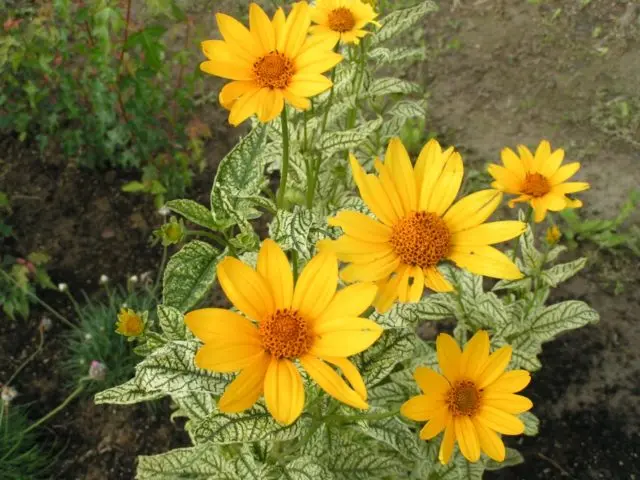
Perennial crop has a long flowering period
Seeds begin to be sown in mid-February, then in May the seedlings will be ready for transplanting into open ground. Gardeners recommend subjecting the seeds of a perennial plant to a stratification procedure. Then they need to be placed in moist material and only after that in nutrient soil. When planting, it is important to keep a distance of about 5 cm and maintain a depth of 1 cm. A month before transplanting seedlings, it must be gradually hardened off.
Growing heliopsis seedlings from seeds at home
First you need to prepare a soil mixture of coarse sand, peat and sod land. A few weeks before sowing the seeds, this mixture must be treated with a solution of manganese, and then covered with a film. Before planting, a drainage layer is made in the box, the prepared mixture is poured on top and the seeds are distributed over it.
They should spend about a week in a warm place with good lighting. And then it is desirable to transfer them to a cool room for a month in order to harden them. Then put it back in a warm place. In this case, the seeds must be covered with a film and subjected to periodic ventilation. You can completely remove the shelter only after the appearance of the first leaves. Care of seedlings is simple – it is necessary to water and loosen the soil in a timely manner.
Planting and caring for perennial heliopsis in the ground
Planting and subsequent care of heliopsis is quite simple. It is important to follow the basic rules of planting and wait for the night frosts to end. The place and soil must be prepared in advance. It is also necessary to take care of the supports, since the perennial heliopsis is quite high.
Recommended dates
The soil after winter should be warm enough not only from above, but also inside. For central Our Country, the most suitable time for planting seedlings in open ground is the beginning of May. As a rule, there should not be night frosts at this time, but if this happens, then temporary film shelter can be used.
Site and soil preparation
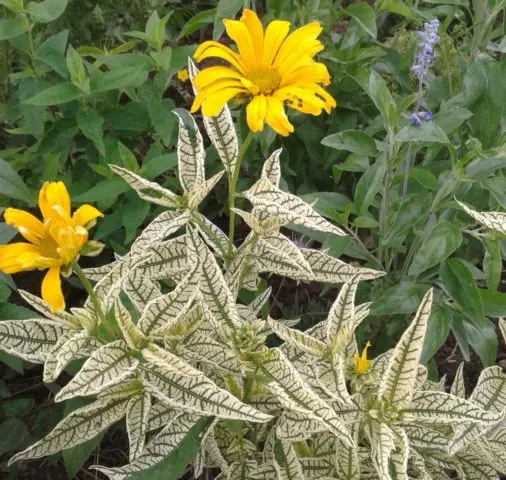
For perennial heliopsis, you will need the sunniest place on the site.
The best places for planting perennial heliopsis on the site are sunny and well-protected zones from drafts and wind. Clay soil is desirable for the plant, but it allows moisture and air to pass through. In shaded areas, the stems grow much longer, and flowering is rather poor. It is known that perennial heliopsis does not tolerate stagnant moisture, so the plant needs a good drainage layer. The soil should be neutral in acidity. Also, when planting, you should pay attention to the fact that the culture grows rapidly and it requires frequent weeding and removal of shoots.
Direct sowing of seeds in the ground
The procedure for planting seeds of perennial heliopsis is simple, but requires compliance with some rules:
- between the beds, an interval of 60-70 cm should be observed;
- the distance between each seed is 20-30 cm;
- after growth, remove the weakest ones, thereby thinning out the crops for better development of the remaining ones;
- the depth of the furrow is at least 2-3 cm.
Planting can be done in the fall, and watering can be done in October or November, depending on the weather. In the event that the landing will be in the spring, then you need to make sure that by this time the soil is already dry enough. If necessary, sowing heliopsis seeds can be postponed to May or June.
Seedling transplant
Heliopsis transplantation is possible already in early May under good weather conditions. It is important to keep the distance between the seedlings. The root system of the plant is quite delicate, so in order not to damage it, you need to remove the seedlings along with the earthy clod, and water it before that. This will enable the young flower to quickly adapt to a new place. It is important to water the sprouts abundantly for 1-2 weeks until the perennial takes root.
Watering and fertilizing schedule
After heliopsis gets stronger in a new place, the irrigation regime should be at least 2-3 times a week. The plant is southern and tolerates forced drought well, but this does not mean that you can completely deprive it of moisture. Its lack will negatively affect flowering, growth and development. Water should be used warm, settled. The best time for the procedure is in the evening or in the morning.
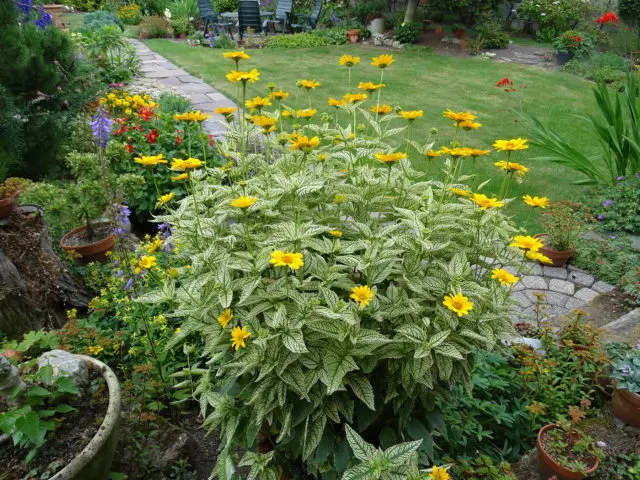
In order for the perennial to develop in width, you will need to pinch the tops.
As for fertilizing, if the soil was properly prepared when planting perennial heliopsis, the first recharge will be required no earlier than in the second year.
Weeding, loosening
These procedures are necessary for heliopsis, as for any other culture. When loosening, the soil becomes enriched with oxygen, which is important for the good development of the whole plant and abundant long-term flowering. Weeding is also important, with the help of which they get rid of weeds.
Pinching, installation of supports
Support is necessary for heliopsis, since the plant is quite tall and the stems can break under their own weight or due to strong gusts of wind when it rains. They are especially required for those varieties that have strong growth.
Pinching is necessary for the perennial to grow and develop in width. To do this, remove the tops of the heliopsis.
Wintering
Before the winter period, all bushes are cut at the root at ground level. At the same time, no shelter is required – heliopsis tolerates frost perfectly.
Diseases and pests
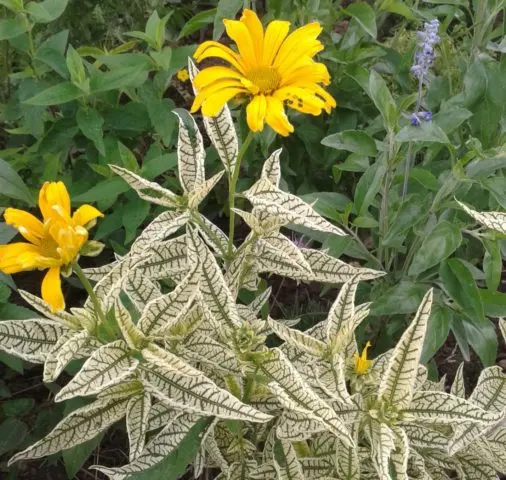
One of the varieties of perennial – variegated has a beautiful leaf plate
The biggest danger to perennial heliopsis is black aphid. If you regularly inspect the bush, you can notice traces of its attacks in the early stages of the lesion. And this means that it is worth trying to influence it with infusions of celandine, wormwood with the addition of a soapy solution. If the lesions are significant, then the perennial culture must be treated with insecticidal preparations. Those parts of the plant that have suffered greatly should be cut off. In addition to aphids, perennials can be affected by fungal diseases – powdery mildew and rust.
Conclusion
Planting and caring for perennial heliopsis is not difficult, especially for experienced gardeners. The culture propagates by dividing the bush or seeds. Both of these methods are quite simple. Caring for a plant in the open field has no special features. The main thing is timely watering and fertilizing, as well as the establishment of supports, because heliopsis is quite high.









